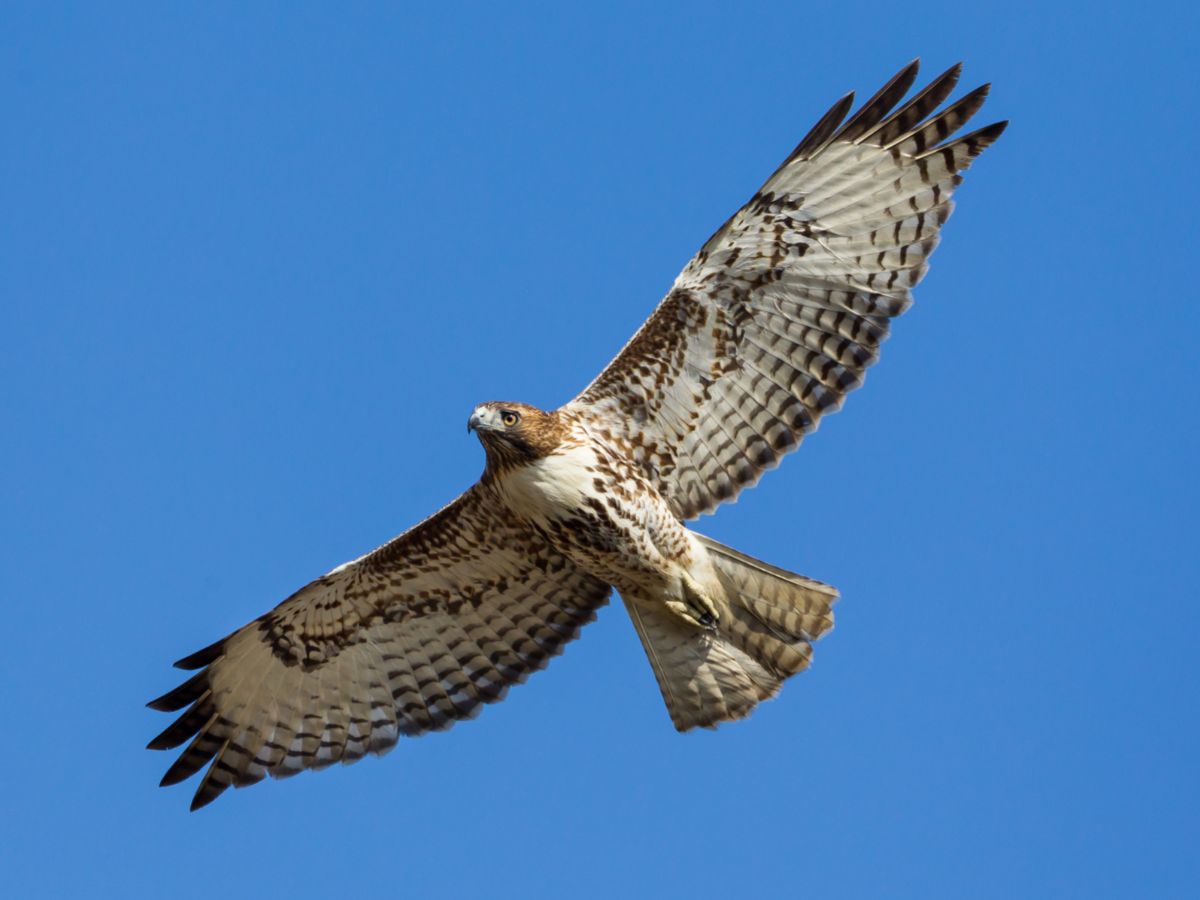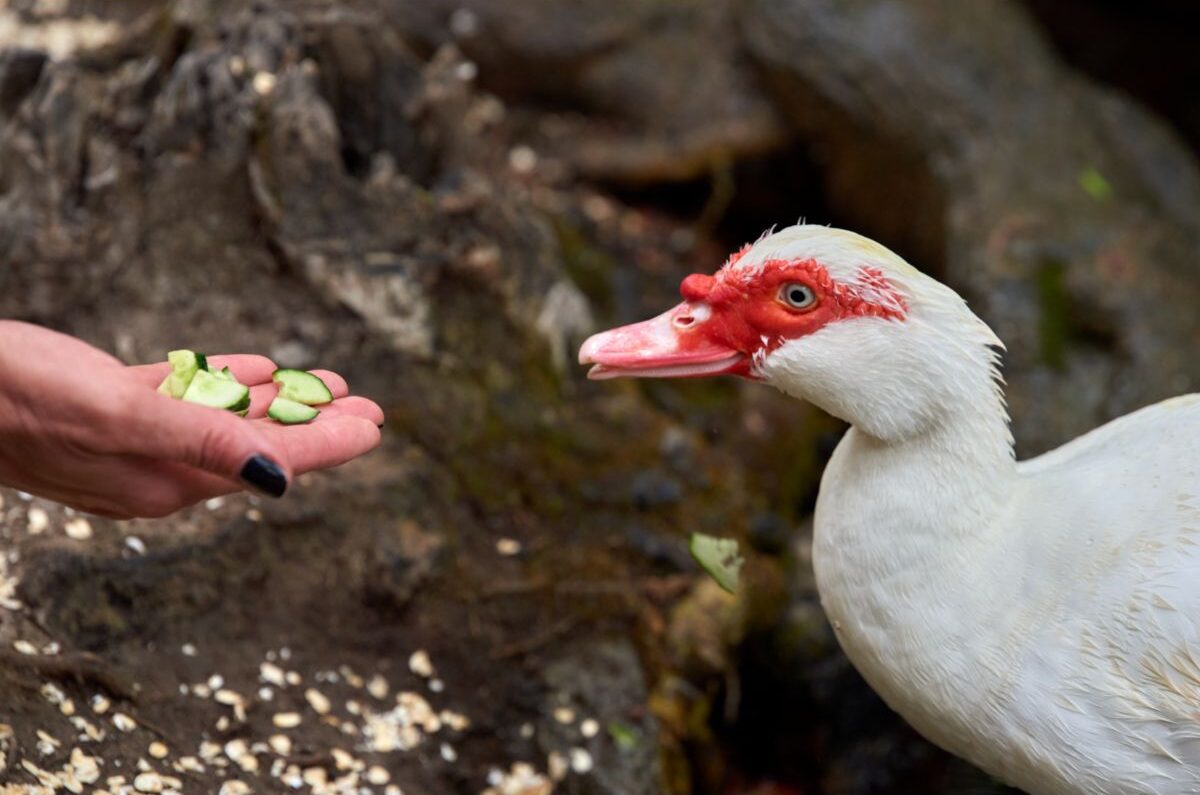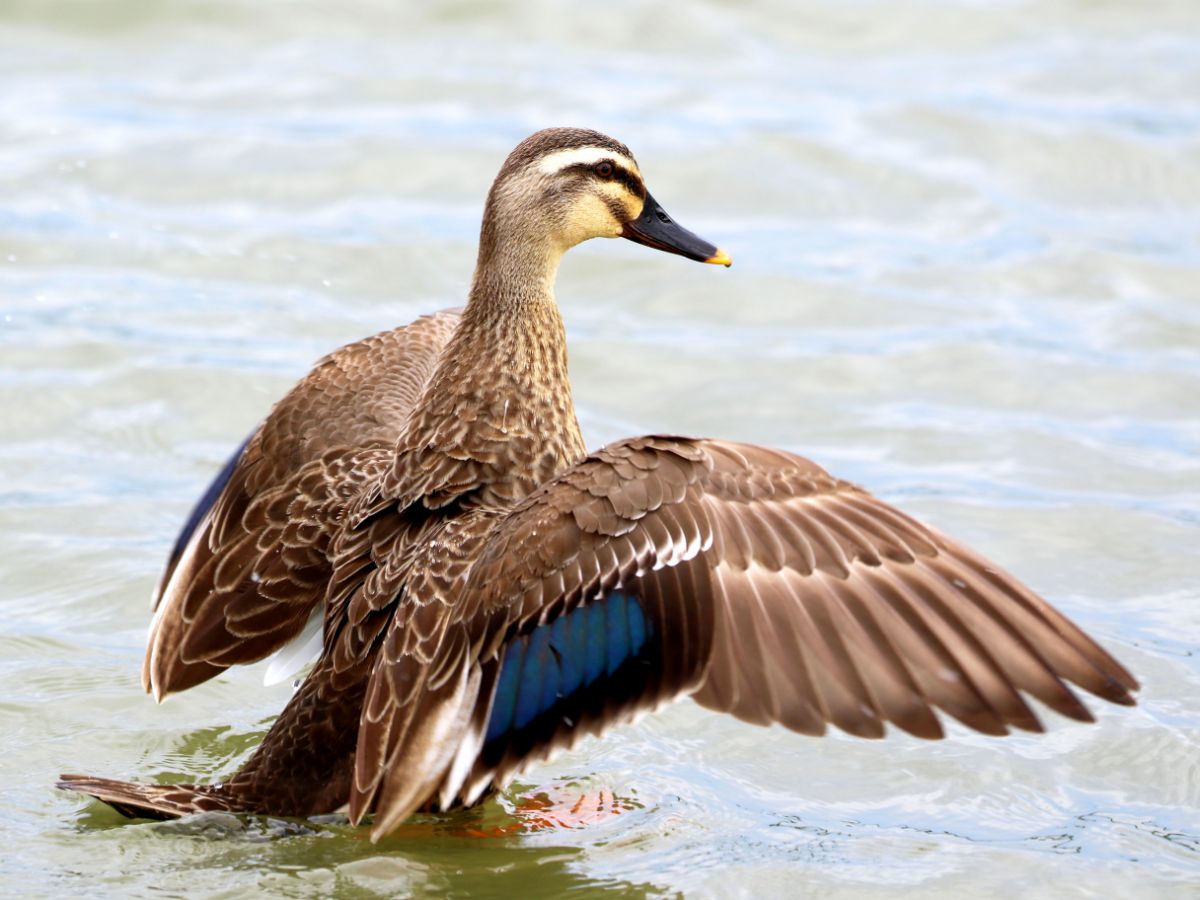When we think about predator threats to our chickens, the first animals that come to mind are coyotes, snakes, raccoons, possums, and mountain lions, depending on your area, but sometimes we forget one of the most formidable and persistent predators; the hawk. They are formidable and should know how to protect your chickens from hawks.
One of the best ways to keep hawks at bay is to have your chickens in a run with a mesh wire or hardware cloth. To get the hawks to stay away, you can cover or conceal feeding points, add roosters to your flock, and add shiny objects like strips of foil to the run or scarecrows.
Contents
Which birds of prey attack chickens?
The greatest danger to chickens comes from the goshawk; other birds of prey that exist in Germany, such as sparrowhawks and buzzards, do not usually hunt adult chickens.
Corvids usually only target chicks and young chickens whose feathers are not yet closed. If you have young chickens, you also need to watch out for buzzards, they are smaller than hawks but can also be a risk to young chickens or bantams.
Small chickens, pullets, chicks and bantams are significantly more at risk from bird of preys than large chicken breeds such as Jersey Giant, Cochin, Brahmas or Orpingtons.
Hawks – A short profile
Name: Hawks (Family Accipitridae)
Size: Hawks come in various sizes, ranging from small to large. The smallest hawks, such as the Sharp-shinned Hawk, measure around 30 centimeters in length, while the largest, like the Ferruginous Hawk, can reach up to 60 centimeters in length. Wingspans range from 60 to 150 centimeters, depending on the species.
Appearance: Hawks are known for their sleek and streamlined bodies, designed for swift and agile flight. Their plumage varies greatly among species but often includes a combination of browns, grays, and whites, providing excellent camouflage for their woodland and open habitat environments. These birds of prey possess sharp, curved beaks and powerful talons for capturing and dispatching their prey.
Habitat: Hawks can be found worldwide, inhabiting a diverse range of environments, from forests and woodlands to grasslands and deserts. They are skilled aerial hunters, utilizing their exceptional eyesight to spot and pursue prey from above. Some species, like the Red-tailed Hawk in North America, adapt well to human-altered landscapes and can be spotted perched on telephone poles or soaring over open fields.
Behavior: Hawks are apex predators, renowned for their hunting prowess. They primarily feed on small to medium-sized animals, including rodents, birds, reptiles, and occasionally insects. With their remarkable vision and agile flight, hawks are known for their ability to perform aerial acrobatics while chasing down prey.
How To Keep Chickens Safe From Hawks
Hawks are formidable and persistent predators that keep trying to get to your chickens if it suspects you’re not prepared. Hawks have incredible eyesight and are extremely fast when swooping in to catch their prey. Hawks are everywhere, so no matter what area you are in, you will have hawks ready and willing to attack your ladies.
Keeping hawks away is challenging because they are a protected species. It’s great that wildlife is protected, but it eliminates many effective ways to keep them away from your chickens. The methods you use need to be deterrents, as killing a hawk is against the law, no matter the circumstances. Here are some effective ways to keep them at bay.

Step 1 – Install The Correct Chicken Run
Most backyard or barnyard chicken keepers like to have their chickens run free. That’s great, but you must protect them even when they run free. That means using a chicken run. There is no hard fast rule to how large the area your fence needs to be so they can have a huge area to roam, but the most important thing about a chicken run is it needs to be covered.
When you have a hawk problem, you should use hardware cloth to cover the top and sides of the chicken run as this doesn’t allow a hawk’s beak and claws to penetrate the cloth. Be sure to cover the run and the coop so the hawk won’t have any vulnerable points and turn your yard into a fly-through snack center. This method also helps to keep owls (another predator at bay).
Step 2 – Get A Couple Of Roosters
Roosters are great at protecting chickens from hawks. Roosters are always on the lookout for potential threats to the flock. They scan the skies, and as soon as they see a hawk flying around in the distance, they will warn the hens to gather in a safe spot. That way, the hawk will lose the element of surprise.
Hawks are naturally cautious and will avoid approaching if they are seen before striking. They might be quick, but roosters are tough and loud enough to siren out a warning before the hawk swoops down.
Step 3 – Use Decoys To Keep Hawks Away
Decoys such as scarecrows or fake owls near the coop will help deter hawks. Their keen eyesight will make them think a human is near their prey or an owl has already claimed the territory. Hawks are not nocturnal like owls, so the theory is that because owls have been known to prey on hawks during the night, they will be cautious enough to keep away when they see the fake owls.
Some people say it lulls you into a false security as the fake owls do not fool hawks and others say it works well for them; the debate continues, but it is worth a shot. Move the scarecrow or fake owls around strategically, so the hawks stay on alert. It will deter them from coming near the coop or chicken run.
Step – 4 Use Shiny Objects To Confuse The Hawks
Because hawks have such great eyesight, many people hang old CDs or strips of aluminum foil around their chicken coop to deter hawks. They say that the sun’s reflection shines too brightly and confuses the hawk’s keen eyesight, making them avoid the glare and thus the chicken coop and run altogether.
Step 5 – Use A Guard Dog And Other Farm Animals To Protect Your Hens
One surefire way to keep hawks at bay is to get a guard dog. Hawks are cautious of dogs or any other animal they might have to fight with, so they are much less likely to attack one of the chickens if they think they might be getting into a scrap with a k9.
Not much is known about why they are careful around dogs, but it is an effective deterrent. Please ensure your dog is trained to guard the chickens and not hunt them, as you don’t want to trade one predator for another. Other companion animals that might work instead of a dog near the chickens are ducks, alpacas, and guinea fowl. They make a lot of noise and will always be on alert.
Other farm animals that can help keeping hawks away are:
- Geese
- Guinea fowl
- Goats
Geese are known to be very territorial, not tolerating foreign animals in their territory and also attacking predators when they feel threatened. They make a lot of noise when attacked by predators, which can alert you.
Guinea fowl are much smaller compared to geese and do not stand a good chance in a confrontation with a goshawk, but they can make a very loud alarm when a goshawk approaches.
Goats often drive goshawks away just by their presence in the flock of chickens, as the goshawk cannot gauge how they are behaving. In rare cases, goats may even defend a chicken in a hawk attack.
Step 6 – Cover Or Conceal Feeding Points
Hawks often attack when the chickens are at their most vulnerable feeding time. So it’s important to cover or conceal the chicken’s feeding points. You can do that by regularly changing the color of the feeding area, placing scarecrows near the feeding area, and using raised feeding areas or hutches.
If you don’t want the hawks to start associating the chickens’ feeding time with their own feeding time, your chickens are the main course. You can also add foil around the feeding area so the hawks won’t come near the chicken coop or run.
Especially if your chickens’ run is too large to cover completely with netting, it pays to provide additional cover for your chickens by planting shrubs and trees or installing chicken tunnels.
Some suitable shrubs are:
- Elderberry
- Raspberries and blackberries
- Blackthorn
- Fruit trees
Conclusion
Keeping chickens is advantageous, but risks include protecting your chickens from hawks and other predators. Hawks are relentless and will keep coming back to attack your chickens if you don’t take certain steps to protect your ladies from the onslaught of the hawks in your area.
Some ways include getting a rooster, using decoy humans and owls, and ensuring your chickens have a safe roaming space and coop.
Frequently asked questions
How does the hawk hunt chickens?
The goshawk is known for its skillful hunting techniques, while it feeds on a variety of prey, including small mammals and birds, hunting chickens presents a special challenge.
The goshawk has several hunting strategies to catch chickens, one commonly used tactic is the surprise attack. From an elevated position such as a tree or post, the goshawk patiently watches its prey. As soon as an opportunity presents itself, it swoops down on the unsuspecting chickens from the air with lightning speed. These it grabs with its sharp talons and holds on to them while killing them with its powerful beak.
Another effective method used by the goshawk is chasing. With its agile aerial maneuvers, it pursues the fluttering chickens and tries to exhaust them. Through skillful aerial maneuvers, the goshawk attempts to circle and corner its prey. Once it gets close enough, it attacks and kills the chicken.
Sometimes the goshawk will hunt from ambush. It positions itself near chicken feeding areas and waits patiently. As soon as a chicken is careless, it takes advantage of the moment of surprise and swoops out to seize its prey.
When does the hawk attack?
The chicken goshawk is an opportunistic hunter and your chickens only during the day, at night it retreats and sleeps. Goshawks are territorial birds and will defend their hunting grounds from intruders.
As a rule, goshawks do not get along with red kites and crows, which also have their own territories. Red kites and crows chase goshawks away from their hunting grounds because they want to protect their chicks.
So if you have a group of crows in your yard, or if a red kite frequently circles near you, no goshawk will settle nearby.
Unlike chicken hawks, red kites and crows are also not interested in chickens and usually do not actively hunt them (except for pullets, chicks, bantams and sick birds!).

Can a hawk kill adult chickens?
Goshawks are able to kill larger chickens thanks to their good hunting tactics and sharp claws. Larger prey, such as chickens or rabbits, are usually hunted by female goshawks, as they grow much larger than males.
Small male goshawks weigh only about 0.5 kg and would thus have to fight properly with a large chicken. Female goshawks, on the other hand, can weigh up to 2.2 kg and even have enough strength to fly away with a small pigeon or rabbit.
How do I know that my chickens have been attacked by a bird of prey?
Bird of prey attacks are fortunately easy to distinguish, if a hawk has killed a chicken the surrounding area will be full of feathers as the hawk “plucks” its prey after killing it.
Martens and foxes will either steal the chickens silently, or you will find dead chickens with their throats bitten through.
What does the chicken hawk eat?
A favorite food of the chicken goshawk is, as the name suggests, chickens. However, besides chickens, other birds are also on the chicken goshawk’s menu. It has a wide range of prey and likes to attack pigeons, pheasants, ducks and other smaller birds.
With its fast flight and sharp claws, chicken hawks are able to track and grab birds in mid-air.
But birds are not the only food source for the chicken goshawk. It also eats a variety of other smaller animals. These include rodents such as mice and rats, squirrels, rabbits, and sometimes reptiles such as lizards or snakes.
Because the goshawk is a bird of prey, it feeds exclusively on meat and has the flexibility to adapt its hunting strategies to its prey.
Where do hawks occur? And where do goshawks nest?
Goshawks are common in several regions of the world, including Europe, North America, Asia, and parts of Africa. They inhabit a variety of habitats, from forests to open landscapes to mountainous regions.
In Europe, for example, goshawks are found in most forested areas. They prefer mixed forests with high treetops that give them a good view of their hunting grounds. These birds of prey are territorial and claim a large area as their territory.
As for nesting habits, goshawks usually build their nests high up in the trees. These nests, often constructed of twigs, branches and foliage, provide hawks with shelter and a safe environment to raise their young. They usually prefer secluded and quiet areas to avoid disturbance. The nests are expanded and reused each year by the goshawks.
The breeding season for goshawks varies by region, but is usually in the spring. During this time, females lay their eggs, which are then incubated by both parents. The young hatch after about a month and are fed and cared for by the parents until they are fledged.




